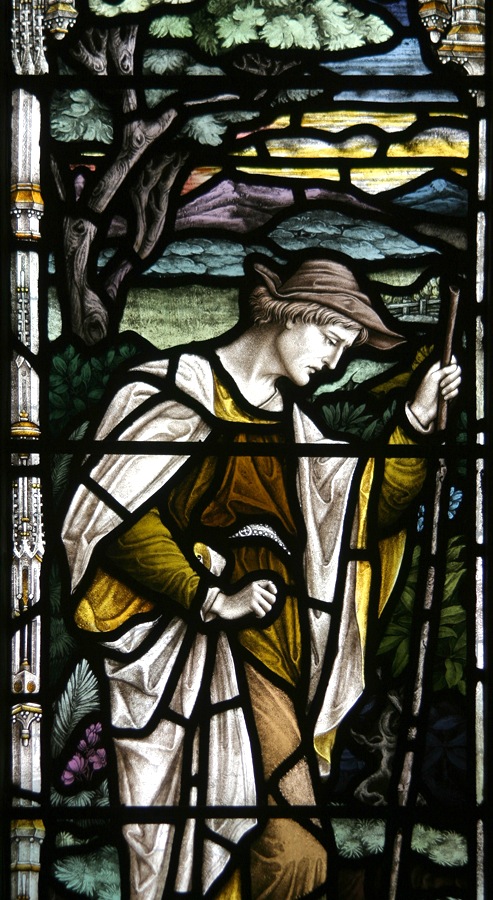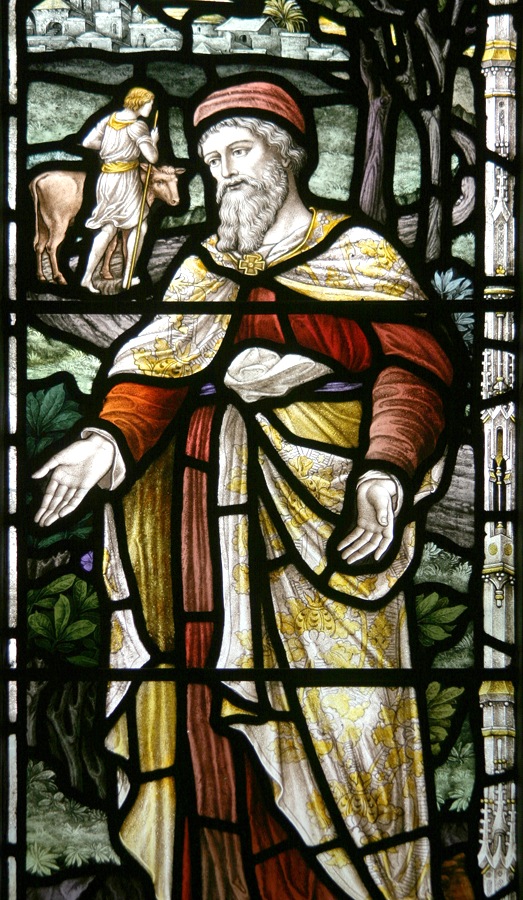

Right: Whole window. Left: An angel holding a crown in the tracery light. [Click on these and the following images to enlarge them.]
Return of the Prodigal Son in William Butterfield's St Mary Magdalene, Enfield, a later window by Heaton, Butler and Bayne, in fact their last window for the church, dated 1931 (see Eberhard). It was given "To the Glory of God and in gratitude for His many mercies during 90 years" by a parishioner called Colonel Nevell, and the text under the figures expresses the prodigal's good decision, suitable also to such an elderly donor: "I will arise and go to my father" (Luke 15, 18).


Left: Close-up of the Prodigal Son. Right: Close-up of the forgiving father.
It is a lovely window, with very expressive body language. The son who has wasted his inheritance looks perfectly gaunt and broken, the father, taking him back, welcomes him home compassionately, and the other son who has been dutiful and now feels so disgruntled, is only seen in the distance. His back is resolutely turned from the scene of reunion, though even his ox turns to look. Such a window helps to explain why the firm was still in business many years after the Victorian heyday for ecclesiastical stained glass.
Photographs by John Salmon, and text by Jacqueline Banerjee. You may use these images without prior permission for any scholarly or educational purpose as long as you (1) credit the photographer and (2) link your document to this URL in a web document or cite it in a print one.
Sources
"The Nave Stained-Glass." St Mary Magdalene. Web. 6 July 2015.
Eberhard, Robert. "Stained Glass Windows at St Mary Magdalene." Church Stained Glass Windows. Web. 5 July 2015.
"Heaton, Butler & Bayne (1852-1953)." Gwydir Lliw Nghymru: Stained Glass in Wales. Web. 5 July 2015.
Created 5 July 2015